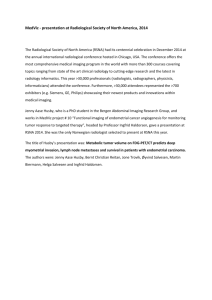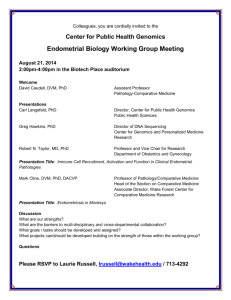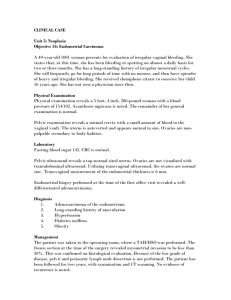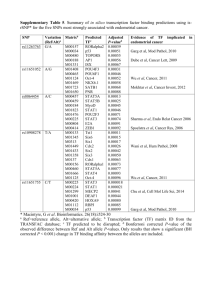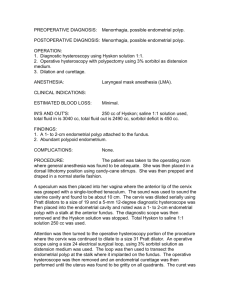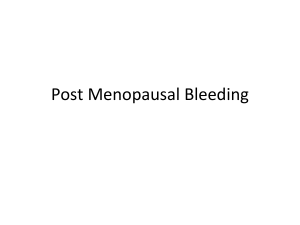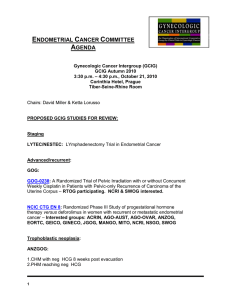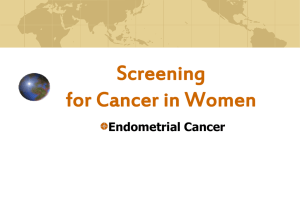Interview - University of Bergen
advertisement
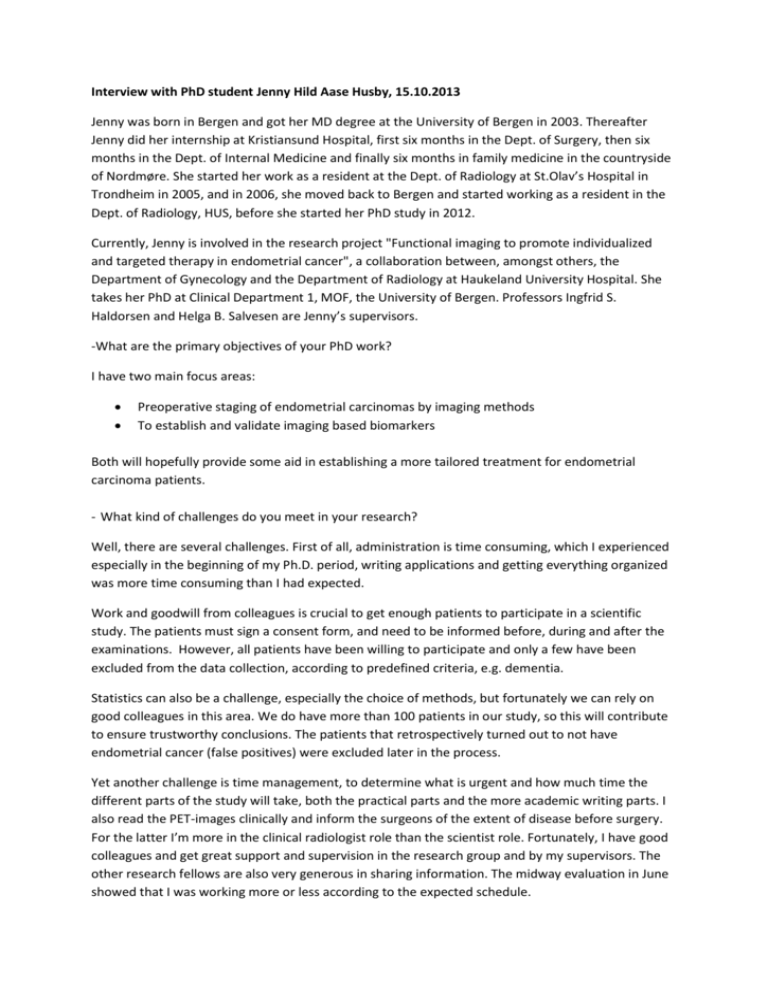
Interview with PhD student Jenny Hild Aase Husby, 15.10.2013 Jenny was born in Bergen and got her MD degree at the University of Bergen in 2003. Thereafter Jenny did her internship at Kristiansund Hospital, first six months in the Dept. of Surgery, then six months in the Dept. of Internal Medicine and finally six months in family medicine in the countryside of Nordmøre. She started her work as a resident at the Dept. of Radiology at St.Olav’s Hospital in Trondheim in 2005, and in 2006, she moved back to Bergen and started working as a resident in the Dept. of Radiology, HUS, before she started her PhD study in 2012. Currently, Jenny is involved in the research project "Functional imaging to promote individualized and targeted therapy in endometrial cancer", a collaboration between, amongst others, the Department of Gynecology and the Department of Radiology at Haukeland University Hospital. She takes her PhD at Clinical Department 1, MOF, the University of Bergen. Professors Ingfrid S. Haldorsen and Helga B. Salvesen are Jenny’s supervisors. -What are the primary objectives of your PhD work? I have two main focus areas: Preoperative staging of endometrial carcinomas by imaging methods To establish and validate imaging based biomarkers Both will hopefully provide some aid in establishing a more tailored treatment for endometrial carcinoma patients. - What kind of challenges do you meet in your research? Well, there are several challenges. First of all, administration is time consuming, which I experienced especially in the beginning of my Ph.D. period, writing applications and getting everything organized was more time consuming than I had expected. Work and goodwill from colleagues is crucial to get enough patients to participate in a scientific study. The patients must sign a consent form, and need to be informed before, during and after the examinations. However, all patients have been willing to participate and only a few have been excluded from the data collection, according to predefined criteria, e.g. dementia. Statistics can also be a challenge, especially the choice of methods, but fortunately we can rely on good colleagues in this area. We do have more than 100 patients in our study, so this will contribute to ensure trustworthy conclusions. The patients that retrospectively turned out to not have endometrial cancer (false positives) were excluded later in the process. Yet another challenge is time management, to determine what is urgent and how much time the different parts of the study will take, both the practical parts and the more academic writing parts. I also read the PET-images clinically and inform the surgeons of the extent of disease before surgery. For the latter I’m more in the clinical radiologist role than the scientist role. Fortunately, I have good colleagues and get great support and supervision in the research group and by my supervisors. The other research fellows are also very generous in sharing information. The midway evaluation in June showed that I was working more or less according to the expected schedule. - What is unique about your study compared to other patient studies? I have continued some of the work from Professor Ingfrid S. Haldorsen’s postdoc period, and this has made it possible to include more patients. Moreover, we are working with both inter- and intraobserver ratings to see if our methods can be reproduced, using the pathology reports as “set answers”. This means that we are several colleagues who read and evaluate the images. Finally, we need to decide which images are best suited to provide useful information for the surgeons, and which may be redundant, because our imaging modalities are quite resource demanding. Hopefully, we will be able to exclude some methods in the future to the benefit for others. - What kind of scanning methods do you apply? We apply both PET/CT and functional MRI methods. I do participate during some scans, but the radiographers do most of the work related to scanning. We perform whole body PET/CT, which is relatively time consuming for both the patients and the staff, because there are several preparations before the scan can take place, and some supplementary work to complete processing and reading afterwards. - Have you achieved any results so far, to be included in your PhD dissertation? We found that conventional MRI showed only modest interobserver agreement and diagnostic accuracy for detection of deep myometrial invasion, cervical stroma invasion and lymph node metastases. Improved methods are therefore needed for preoperative imaging in the staging of endometrial carcinomas (see Figure 3 in Haldorsen et al. 2012). Furthermore, we have observed that low tumor ADC (apparent diffusion coefficient) value is associated with presence of deep myometrial invasion and that the ADC value is negatively correlated to tumor volume in endometrial carcinomas. Preoperative staging by MRI with DWI is prone to considerable interobserver variability. Calculation of tumor ADC values may aid in the prediction of deep myometrial invasion in endometrial carcinomas. These are the conclusions from my second paper to be published and I will also present these data at the RSNA (Radiological Society of North America) Conference in Chicago, USA in primo December. Additionally, my third paper will present PET observations from parts of the same patient population, Jenny says. Fig. 3. Stage 1A endometrial carcinoma (endometrioid, grade 3) in a 71-year-old woman. a, b Sagittal and c, d axial T2weighted (a, b, d) and contrastenhanced T1-weighted (c) images show a hyperintense (relative to myometrium) endometrial lesion in the uterine cavity (a) and increased signal of the cervix surrounding the cervical canal (b). Three out of four observers judged cervical stroma invasion to be present; however, the histopathological report did not confirm this (Haldorsen et al. 2012). - What are your further plans for 2014? I was lucky to receive a research grant of 50 KNOK from MedIM Research School for both 2013 and 2014. The money were used for PET/CT investigations in 2013, and will probably also be used for this purpose in 2014. I also have plans to go through all the PET data and to publish my final paper. I hope to hand in my PhD thesis by the end of 2014. Reference: Haldorsen IS, Husby JA, Werner HMJ, Magnussen IJ, Rørvik J, Helland H, Trovik J, Salvesen ØO, Espeland A & Salvesen H, 2012. Standard 1.5-T MRI of endometrial carcinomas: modest agreement between radiologists. Eur. Radiol., 22: 1601–1611.
